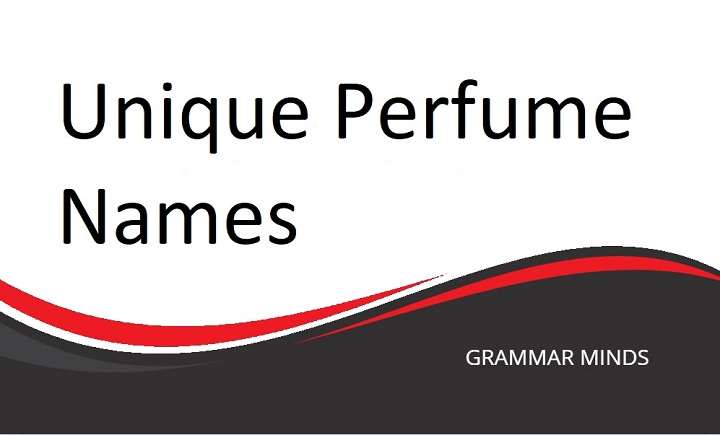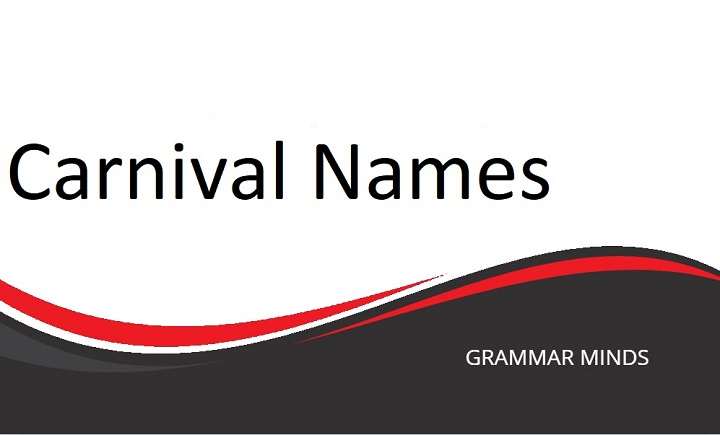The world of perfumery is as vast and diverse as the scents it produces. Each fragrance tells a story, and often, that story begins with its name. A perfume’s name is the first thing a potential customer encounters, and it sets the tone for the experience. In today’s competitive market, unique perfume names play a crucial role in grabbing attention, evoking emotions, and establishing brand identity.
This article delves into the art of naming perfumes, exploring the importance of choosing a unique name, key strategies for brainstorming ideas, and examples of captivating perfume names that have become iconic in the industry.
Why a Unique Perfume Name Matters
A name holds power. It’s more than just a label; it’s the gateway to the emotions, memories, and sensory experiences a fragrance evokes. In the perfume industry, where scents are intangible and must be imagined before being experienced, the name must do a lot of heavy lifting.
First Impressions Last
A perfume name is often the first point of contact with a consumer. Whether in a store, an advertisement, or an online marketplace, the name is what makes someone pause and take notice. If the name is generic or forgettable, it may not inspire curiosity or entice someone to take the next step—whether that’s smelling the fragrance or purchasing it.
Building Brand Identity
A unique perfume name is a crucial part of brand identity. The right name aligns with the brand’s ethos, values, and the type of customers it hopes to attract. For example, a luxury perfume line might lean towards sophisticated, elegant names, while a fun, youthful brand may use playful or whimsical names.
Evoking Emotion and Memory
The sense of smell is strongly tied to memory and emotion. A perfume name that sparks curiosity, nostalgia, or excitement can make a powerful connection with a customer. By choosing a name that resonates emotionally, you can tap into the deeper layers of a consumer’s psyche.
Strategies for Creating Unique Perfume Names
Crafting a memorable perfume name requires creativity, an understanding of your target audience, and sometimes, a dash of inspiration from unexpected sources. Here are some strategies to consider when brainstorming names for a new fragrance.
Use Descriptive Words
Descriptive names give a hint of what to expect from the fragrance. This can include notes of the perfume, the mood it sets, or even the season it is best suited for. Words like “Velvet,” “Ocean Breeze,” “Citrus Sunrise,” or “Midnight Bloom” offer sensory cues to the potential buyer. This approach makes the name both engaging and informative.
Incorporate Foreign Languages
Using words from foreign languages can add an exotic or luxurious touch to a perfume name. French is a popular choice, given its strong association with
Also Read
Alternative Phrases for “Thank You for Reaching Me Out”
fashion and beauty. Words like “Élixir,” “Noir,” or “Fleur” are commonly used in perfume names. However, you can also explore other languages, depending on the tone and target audience of the brand. Italian, Spanish, and even Arabic or Japanese words can convey different emotions and cultural associations.
Leverage Literary References
Books, poetry, and classic literature can be rich sources of inspiration for unique perfume names. A reference to a beloved character, a famous work of fiction, or a famous quote can add depth to a fragrance. For instance, a fragrance named “Ophelia” might evoke Shakespearean themes of beauty and tragedy, while “Gatsby” could be tied to the glamour and mystery of the Roaring Twenties.
Mythological and Historical Influences
Drawing from mythology and history can give your perfume a timeless, regal quality. Names like “Aphrodite,” “Cleopatra,” or “Odysseus” evoke strong, iconic figures from the past. These names often suggest strength, allure, and mystery—traits that can complement a bold, distinctive fragrance.
Create Portmanteaus or Word Blends
A portmanteau is a linguistic blend of two words. This technique is often used in branding to create something entirely new and unique. For perfumes, you can mix two relevant words that describe the fragrance to make a catchy, original name. For example, “Rosewooden” might combine the softness of rose with the strength of woodsy notes, while “Citrilux” could suggest a blend of citrus and luxury.
Personalization: Use Names and Initials
Sometimes, the most unique perfume names come from personalization. Using the names or initials of the perfumer, a muse, or a significant figure can create a special connection. For instance, “Jane’s Secret” or “A.M.” (for the initials of the creator) can offer an intimate, personal touch that resonates with consumers seeking exclusivity.
Play on Themes and Concepts
Many successful perfume names are built around specific themes, such as nature, love, time, or the senses. A perfume might be called “Eternal Flame” to evoke passion and longevity, or “Misty Horizon” to suggest the freshness and mystery of a foggy morning. Playing with broader themes can give your fragrance a narrative, making it more memorable.
Examples of Unique Perfume Names That Made History
Looking at the industry’s most iconic perfume names can provide valuable insight into what works. Here are a few examples of perfume names that have become legendary:
Chanel No. 5
Chanel No. 5, launched in 1921, remains one of the most famous and timeless perfume names ever created. Its simplicity and elegance reflect the minimalism and sophistication that Coco Chanel wanted for her brand. The number 5, chosen because it was Coco Chanel’s lucky number, adds a touch of personalization.
Black Orchid by Tom Ford
Tom Ford’s Black Orchid evokes a sense of mystery, luxury, and darkness. The use of “black” immediately sets a moody, intense tone, while “orchid” brings in an exotic floral touch. Together, the name is a perfect reflection of the bold, sensuous fragrance it represents.
Flowerbomb by Viktor & Rolf
This name offers a surprising and intriguing combination of delicate florals and explosive energy. “Flowerbomb” plays with the contrast between something beautiful and something powerful, hinting at a fragrance that is both sweet and intense.
Angel by Thierry Mugler
The name “Angel” conveys purity, innocence, and heavenliness, which contrasts with the actual boldness and complexity of the fragrance. This duality has helped the perfume stand out in the crowded fragrance market.
Opium by Yves Saint Laurent
The name “Opium” was controversial when it was first released, as it references the addictive qualities of the drug. However, it successfully conveys the intoxicating, luxurious nature of the perfume and has become a staple in the world of high-end fragrances.
Mistakes to Avoid When Naming a Perfume
While creativity is key when brainstorming a unique perfume name, there are certain pitfalls to avoid:
Overcomplication
Avoid names that are too long or difficult to pronounce. If a name is too complex, it may confuse customers and be hard to remember.
Being Too Literal
While descriptive names can be effective, avoid being too literal or cliché. Names like “Rose Petal Perfume” or “Fresh Citrus” lack originality and won’t stand out in a competitive market.
Infringing on Trademarks
It’s essential to ensure the name you choose isn’t already trademarked. Before settling on a name, conduct thorough research to avoid legal issues.
Ignoring the Target Audience
A name that doesn’t resonate with your target market will likely miss the mark. Always consider who your perfume is for and what kind of names they are likely to find appealing.
The Art of Naming a Perfume
Choosing a unique perfume name is an art form that blends creativity, strategy, and a deep understanding of your target audience. Whether it’s inspired by descriptive notes, literary references, or mythological figures, a name has the power to set your fragrance apart from the competition. By investing time and thought into this critical aspect of branding, you can create a lasting impression in the hearts—and noses—of your customers.







